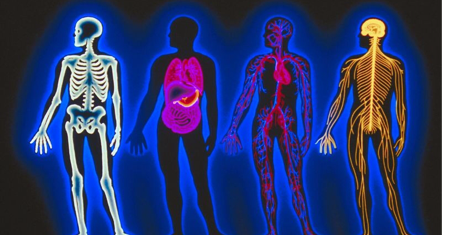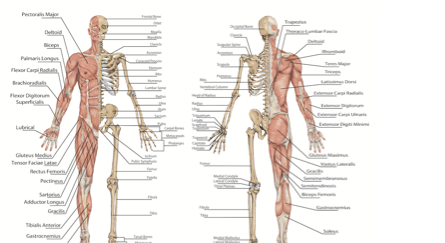Sign up for FlowVella
Sign up with FacebookAlready have an account? Sign in now
By registering you are agreeing to our
Terms of Service
Loading Flow




1.
•Anatomy is the study of the structure of body parts and their relationships to one another.
•Physiology is the study of the function of the body, and how all the body parts work and carry out their life-sustaining activities.
—There are many subdivisions in anatomy. Gross, or macroscopic anatomy is the study of large body structures visible to the naked eye, such as the heart, lungs and kidneys and can be approached in different ways. Regional anatomy is where all structures (muscles, bones, blood vessels, nerves, etc.) in a region of the body are studied. In systematic anatomy the anatomy of the whole body is studied system by system. Surface anatomy is where the internal structures are studied as they relate to the overlying skin surface. Microscopic anatomy studies structures too small to be seen with the naked eye, such as slices of body tissue. Subdivisions of this are cytology which concerns the cells of the body and histology, the study of tissues. In developmental anatomy, structural changes are traced that occur in the body throughout the life span. Embryology is a subdivision of this and studies the developmental changes that occur before birth. Pathological anatomy studies structural changes caused by disease and radiographic anatomy studies internal structures by X-ray images or specialized scanning procedures. Molecular biology is the study of biological molecules and is a branch of anatomy when we study the subcellular level.
—Physiology also has many subdivisions which have to do with the operation of specific organ systems. Renal physiology concerns kidney function and urine production, while neuro-physiology explains how the nervous system functions. Cardiovascular physiology looks at the operation of the heart and blood vessels.
Chapter 1